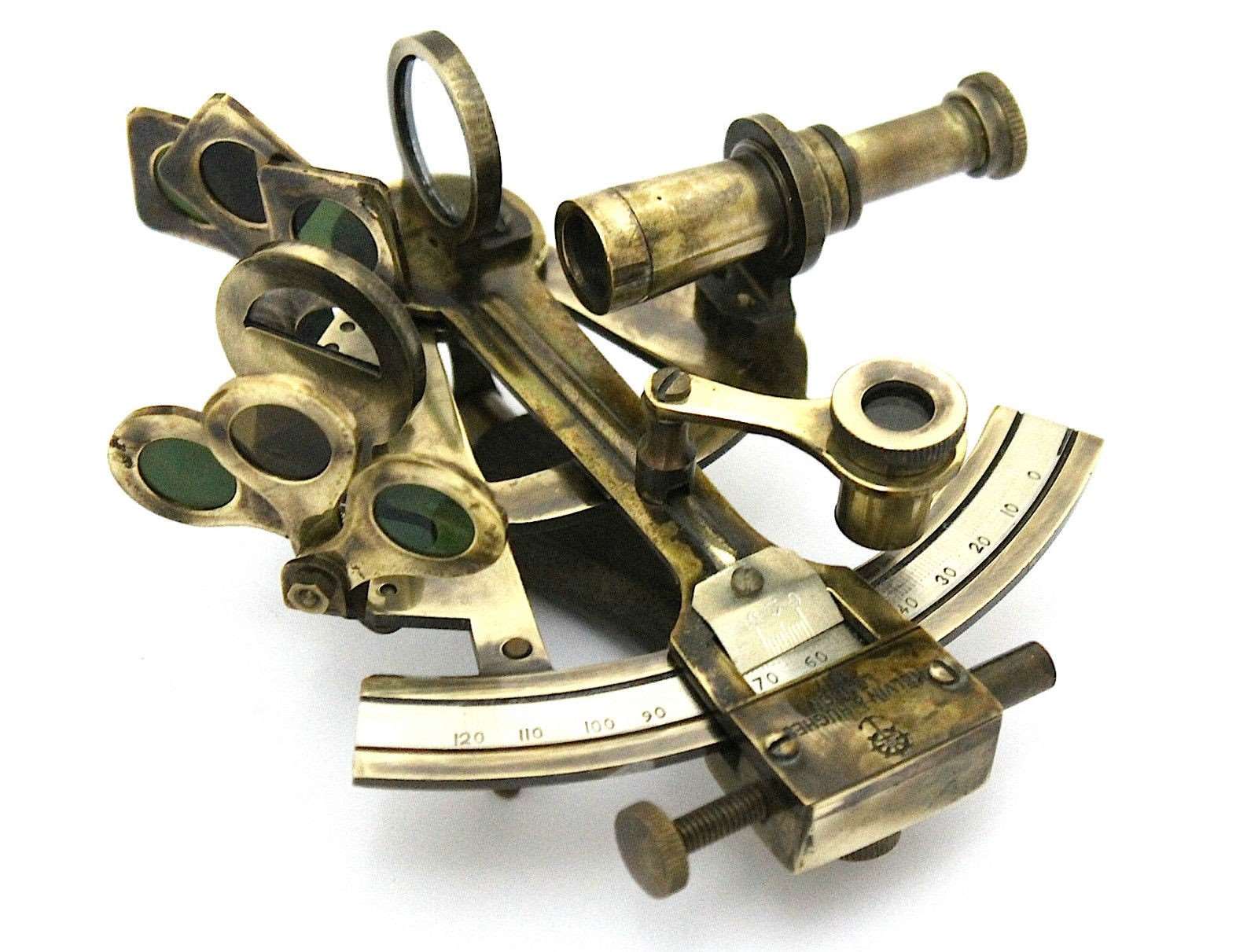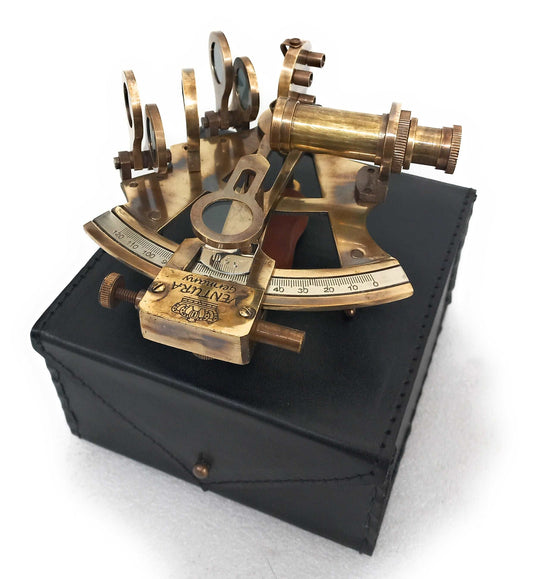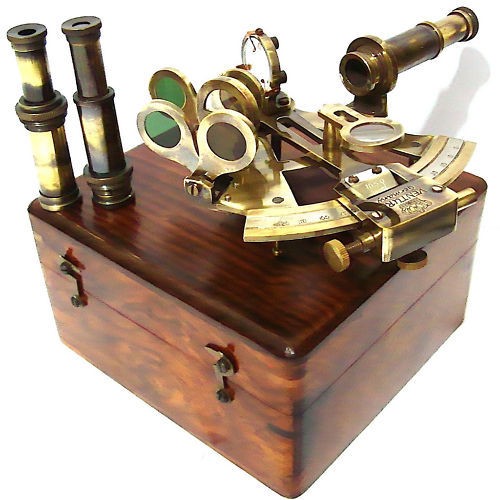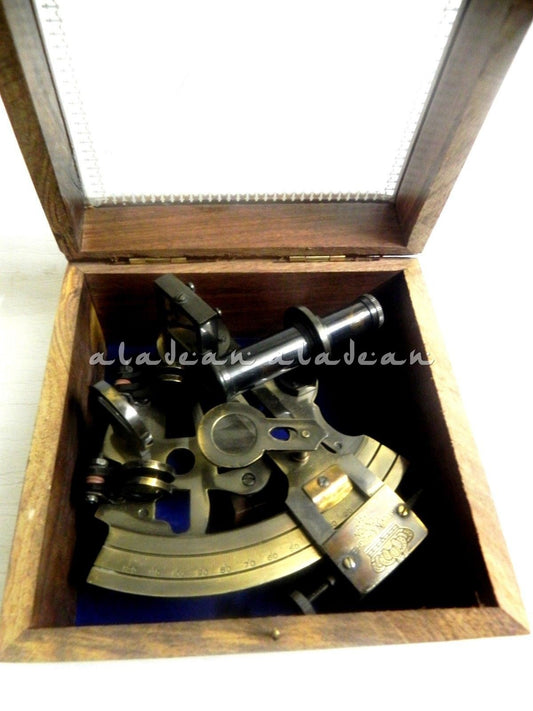Discover the Timeless Appeal of Brass Sextants from Aladean
Share
Discover the Timeless Appeal of Brass Sextants from Aladean
The brass sextant is a timeless instrument that has navigated countless voyages and continues to captivate collectors and enthusiasts today. Aladean, a prominent supplier, manufacturer, and exporter, offers an exquisite range of brass sextants, making them accessible to a global audience. This blog delves into the history, evolution, and usage of brass sextants while highlighting why they make exceptional gifts.
The History and Evolution of Brass Sextants
The sextant, named from the Latin word "sextans" meaning " one-sixth," measures angles between celestial objects and the horizon, which is crucial for navigation. This name is derived from the instrument's arc, which spans 60 degrees, or one-sixth of a circle. The sextant was invented in the 18th century and represented a significant advancement over earlier navigational tools such as the astrolabe and the octant. The astrolabe, used since ancient times, was a multifunctional instrument for solving problems related to time and the position of the stars. The octant, invented in the early 18th century, could measure angles up to 45 degrees. However, it was limited in its range and accuracy.
The sextant improved upon these instruments by allowing mariners to measure the angle between a celestial object and the horizon with greater precision, facilitating more accurate navigation. Brass became the material of choice for sextants because of its durability and resistance to corrosion. These properties were essential for maintaining accuracy at sea, where conditions could be harsh and instruments needed to withstand exposure to saltwater and varying temperatures.
Synonyms and International Names
Known as "sextant" in English, it is referred to as "sextante" in Spanish, "sextant" in French and German, and "sextante" in Portuguese. These variations highlight its universal importance in maritime history.
Why is it Called a Nautical Sextant?
The term "nautical sextant" underscores its primary use in navigation at sea. Mariners relied on this instrument to determine their latitude and longitude, making it an indispensable tool for oceanic voyages.
Step-by-Step Guide to Using a Brass Sextant
-
Step-by-Step Guide to Using a Brass Sextant
- Adjust the Sextant's Index Mirror to Zero: Ensure the index arm is set at zero to start with an accurate measurement.
- Hold the Sextant Vertically: Grasp the handle and look through the eyepiece.
- Align the Horizon with the Reflected Image of the Celestial Body: Move the index arm until the celestial object is visible through the mirror.
- Use the Micrometer Knob to Fine-Tune the Alignment: Adjust until the horizon and celestial object are perfectly aligned.
- Read the Angle from the Sextant's Scale: Note the measured angle where the index arm intersects the scale.
- Record the Time of the Observation: Accurate timekeeping is essential for precise navigation calculations.
Aladean: A Reliable Supplier and Exporter
Aladean has established itself as a trusted source for high-quality brass sextants. Their collection, available for wholesale and bulk purchase, includes meticulously crafted pieces like the Brass Sextant German Pattern and the Brass Marine Sextant - Kelvin & Hughes London 1917. These instruments not only serve practical purposes but also stand as elegant decorative items.


Brass Sextants as Exceptional Gifts
Brass sextants make perfect gifts for maritime enthusiasts, nautical collectors, and history buffs. They offer a unique blend of functionality, history, and elegance, making them cherished keepsakes. These instruments can be personalized for corporate gifts or brand promotions, adding a touch of sophistication and historical charm. Engraving a company's logo or a personal message on the sextant can create a memorable gift that reflects the recipient's interests and passions.
Naval officers, sailors, and navigation students in the United States, United Kingdom, Australia, and other countries would cherish these as symbols of their profession and passion. For these individuals, a brass sextant represents more than just a navigational tool; it embodies the rich maritime heritage and the spirit of exploration.
Customizing Brass Sextants for Corporate and Promotional Gifts
Brass sextants can be customized to suit various gifting needs. For corporate gifts, companies can engrave their logo and a personalized message, making each sextant a unique and meaningful token of appreciation. These customized sextants are perfect for awarding long-time employees, celebrating corporate milestones, or enhancing brand promotions. Personalized sextants also serve as elegant promotional gifts that leave a lasting impression on clients and partners.
Who Would Love a Brass Sextant as a Gift?
Maritime enthusiasts, nautical collectors, and history aficionados will find brass sextants to be exquisite gifts. These individuals often have a deep appreciation for historical artifacts and maritime navigation tools. A brass sextant serves as a functional instrument and a beautiful decorative piece, reflecting their interests and passions.
Famous Brass Sextants in Museums
Notable examples of brass sextants can be found in museums worldwide. For instance, the Royal Maritime Museum in Greenwich, London, houses historical sextants that were crucial in famous explorations. These instruments are valued not just for their monetary worth but for their pivotal role in advancing navigation.
Conclusion
Aladean's brass sextants are a blend of functionality, history, and elegance, making them ideal gifts and collector's items. Explore their extensive collection and discover the perfect brass sextant that aligns with your needs and interests. Visit the Brass Sextants collection to find your piece of nautical history today.







